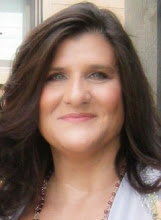The story breaks genre expectations.
There is no Fantasy hero's journey. The episodes dip in and out of times and places. There is no one antagonist for the hero to battle. Most satisfying for me: no romance or sex. Good storytelling can be done without them. The entertainment industry seems to think sex is the only thing that sells. But it isn't. You just need a darn good well-written story.
The protagonist is Morpheus, Lord of Dreams. I really enjoy the worldbuilding and unique twists on known characters such as Lucifer and Mazikeen, Cain and Abel, and an adorable gargoyle. The stories incorporate heaven and hell, angels and demons, humans and mythological characters. The theme of dreams and waking worlds is expertly interwoven. In one scene, Morpheus asks Lucifer how it is possible to torment people in hell if there is no hope of heaven. I've written down so many "love lines" from the dialogue. Clever dialogue can make or break a good story. Sometimes it is too preachy and on the nose. It is the subtlety that makes it magic.
The television series is a good example of a quest plot. The protagonist is caught and his magic objects stolen. When he is released, he goes on a journey to recover his precious relics with a series of challenges, aided and confounded by a unique set of characters.
This type of story easily falls apart. However, in the right hands it can be more mesmerizing than the traditional hero arc. It allows shifts in time and place and cast that would not work well in other genres.
I recommend analyzing Sandman scene by scene as a study in master craft. Whether you wish to write a novel, comic, graphic novel, or anime series, there is much to learn from the adaptation of Neil Gaiman's Sandman.
For a more in-depth discussion of the series, check out this article:
For more on crafting stories without an overt antagonist check out:
Choosing Your Antagonist
Levels of Antagonist
Posted by Diana Hurwitz, author of Story Building Blocks: The Four Layers of Conflict, Story Building Blocks II: Crafting Believable Conflict, Story Building Blocks III: The Revision Layers, and the YA adventure series Mythikas Island. Her weekly blog, Game On: Crafting Believable Conflict explores how characters behave and misbehave. Visit DianaHurwitz.com for more information and free writing tools. You can follow her on Facebook and Twitter. |




Thanks for your review, Diana. Maybe when hubby and I finish Vikings -- we're on the sixth and last season -- I might give Sandman a try, though I have to admit, it doesn't sound like my kind of show. Who knows? It might pull me in.
ReplyDeleteVery helpful post, Diana. We can learn so much by analyzing film and television that we can apply to novel writing. I'm not familiar with Sandman, but I may check it out.
ReplyDelete"The entertainment industry seems to think sex is the only thing that sells. But it isn't. You just need a darn good well-written story." Thank you for noting this, Diana! My desire not to feel like a Peeping Tom inspired the writing of my first novel, which has been updated and will be reissued this fall; it also turned me away from most of my favorite authors.
ReplyDelete